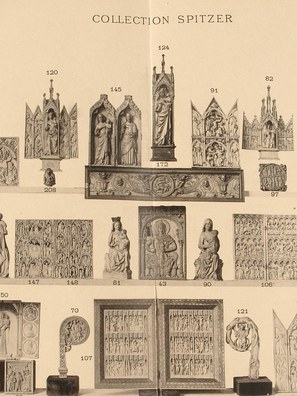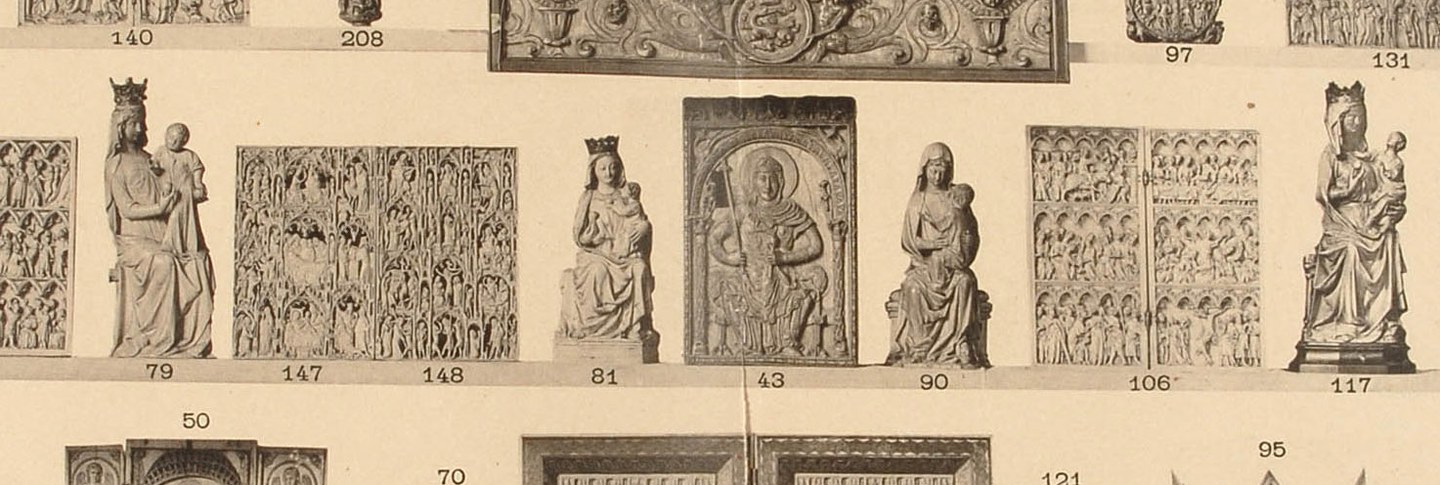
For a variety of personal and political reasons, a few nineteenth-century art collectors enthusiastically acquired manuscripts, textiles, and small objects of enamel, gold, silver, and ivory that represented the history of art from early Christianity through the Renaissance. Many of these objects had been tucked away in church, royal, or private collections, some reappearing in revolutionary France as treasuries were confiscated. The burgeoning European art market benefited from the portability of such objects.
A number of the private collectors represented in this exhibition wished their collections to be displayed in various ways to the public. They collaborated with museum curators, art historians, illustrators, and publishers to produce beautifully illustrated catalogs not only for self-promotion but sometimes with scholarly and educational intent. Some collectors opened their homes to scholars and members of the public in order to allow them to study the objects, contributed objects to the great European exhibitions, and sought to bestow their collections on museums. Furthermore, several collectors were avid supporters of newly established schools of design. Their collecting, display, and patronage created new markets for revivalist styles in the applied arts but also markets for forgeries, of which these collectors were sometimes victims themselves. High-quality forgeries complicated and continue to complicate the study of these so-called “minor arts.”









